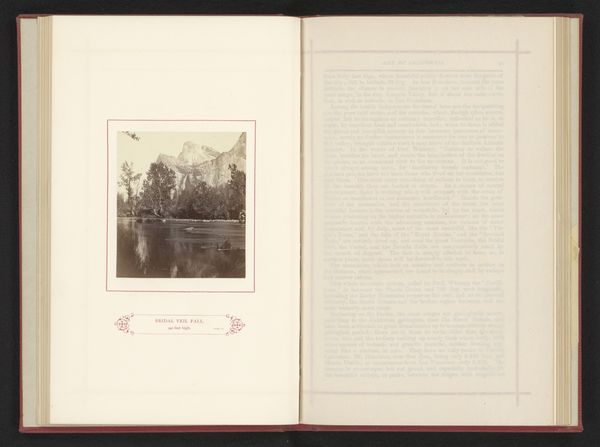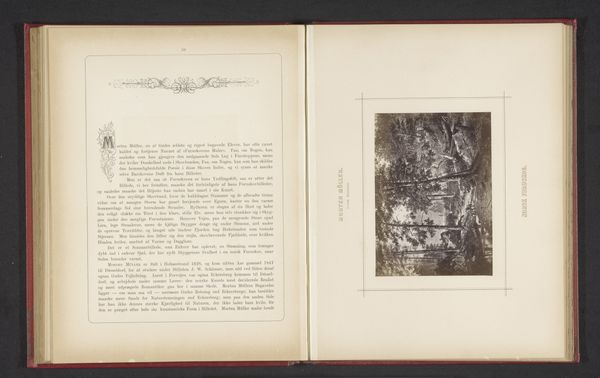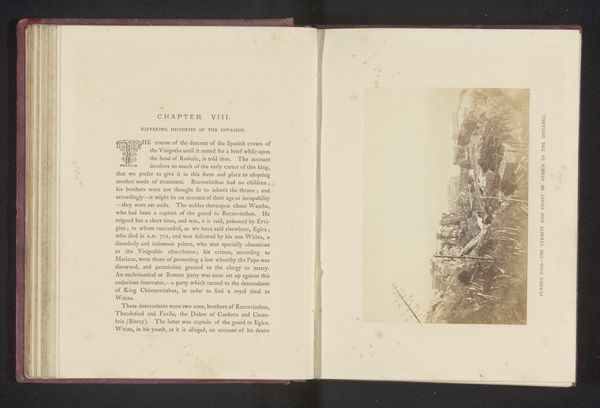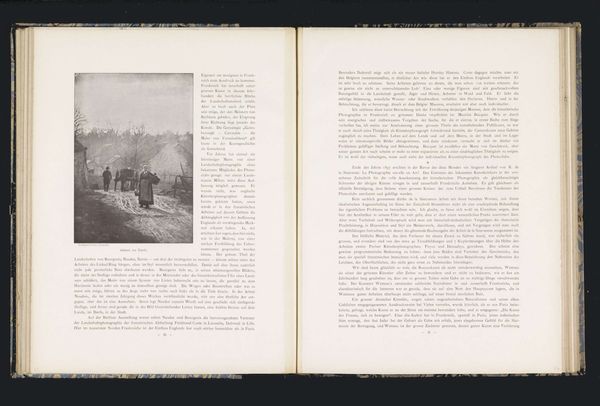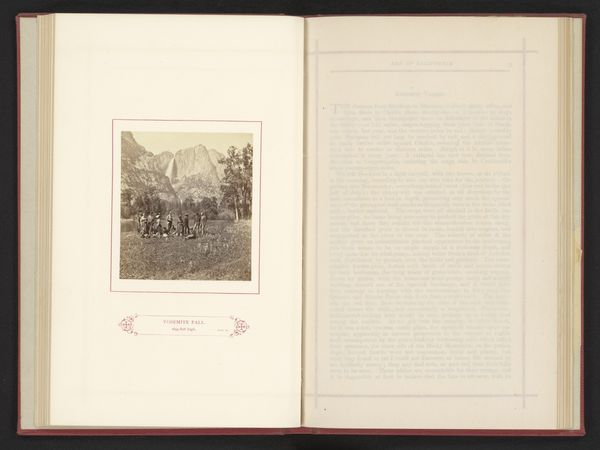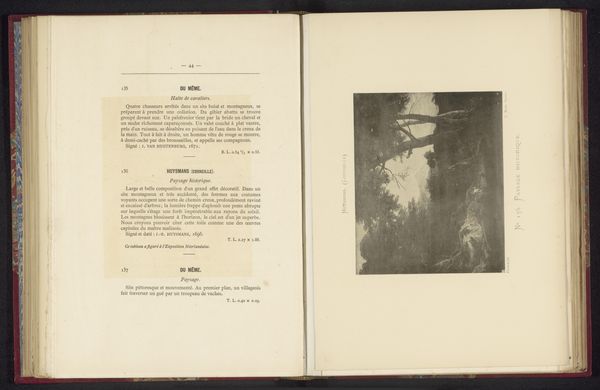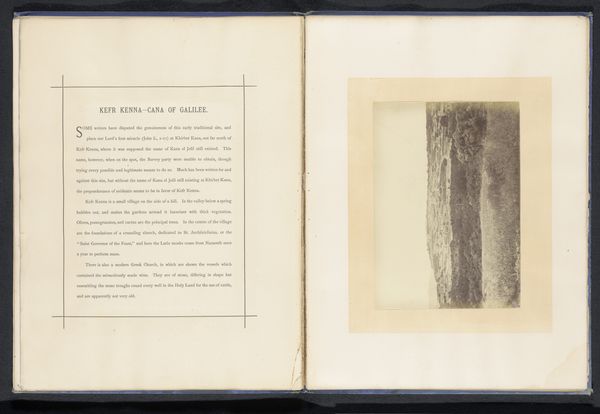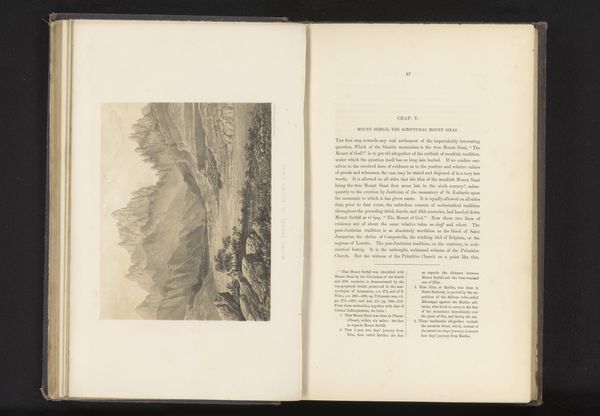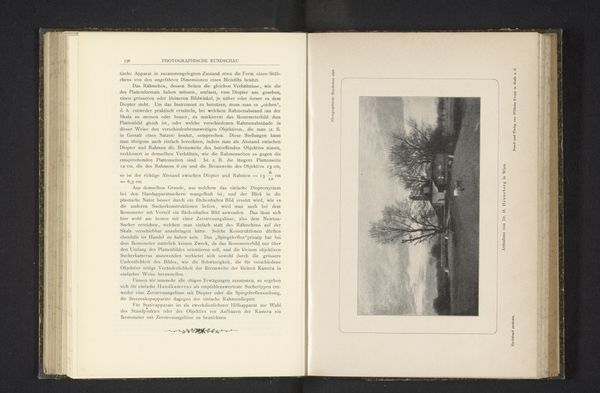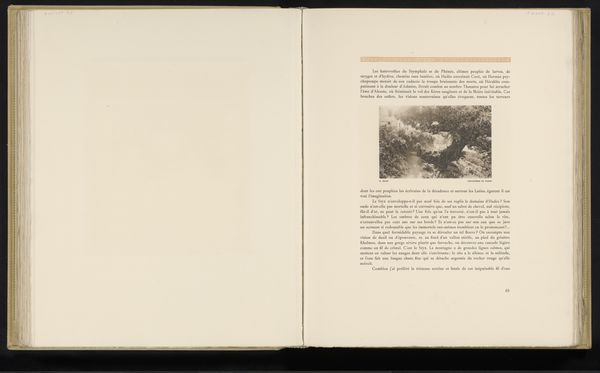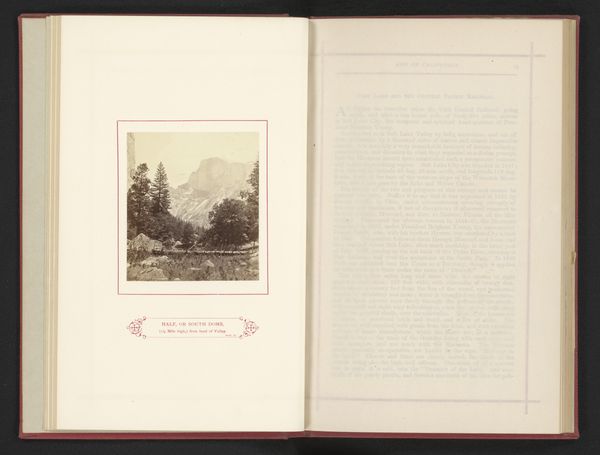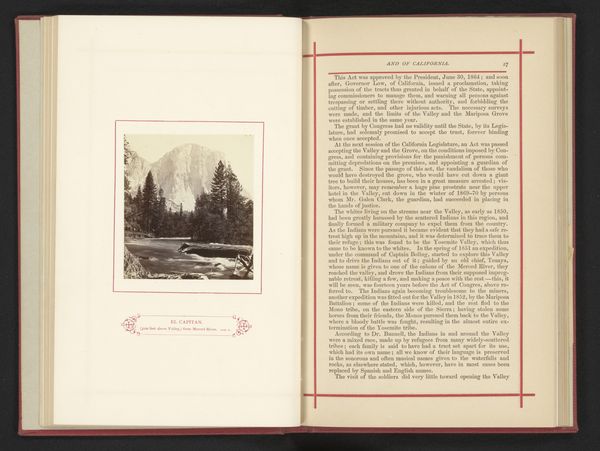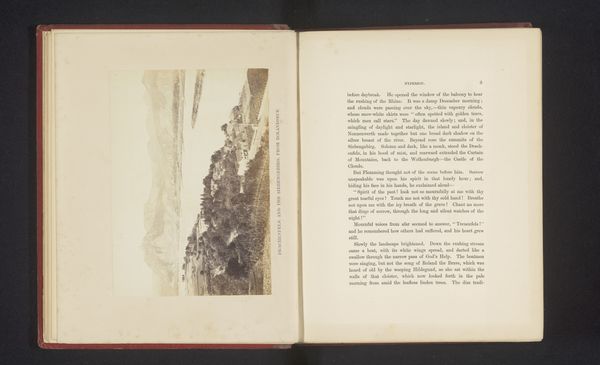
photography, gelatin-silver-print
#
landscape
#
waterfall
#
river
#
photography
#
mountain
#
gelatin-silver-print
#
hudson-river-school
#
realism
Dimensions: height 91 mm, width 81 mm
Copyright: Rijks Museum: Open Domain
Curator: Here we have John P. Soule's photograph, "Gezicht op de Nevadawaterval in de Yosemite Valley," dating to before 1871. It’s a gelatin-silver print that beautifully captures a sweeping view of Nevada Fall nestled within the Yosemite Valley. Editor: The scale feels vast, but it's softened by the muted tones and delicate detail. There's a stillness, almost a reverence. The materials—the gelatin silver print— lend an intriguing depth; you feel as if you're peering back into the landscape. Curator: It’s tempting to view this as a straightforward landscape, yet it's equally crucial to examine its context. The rise of landscape photography was intertwined with the expansion into the American West. Images like these played a significant role in shaping perceptions and promoting a specific narrative of untouched wilderness ripe for conquest and resource extraction. Editor: Yes, that narrative is embedded in the making. The image isn't simply observed; it's manufactured using specific technologies and circulated with clear social and economic agendas. Think about the mining and extraction processes to obtain silver—they become almost spectral presences in the final print. Curator: Exactly! This image also connects with the Hudson River School movement, known for romanticized depictions of nature. However, we must also ask, "Whose nature is being represented?" Indigenous presences are largely absent or erased, reinforcing a colonial vision of ownership. The land is not a blank slate as it was so often perceived, but a vibrant, and occupied place, even at the time. Editor: And who was consuming these images? Likely middle and upper-class viewers, often far removed from the labor involved in producing both the photograph itself and the resources extracted from these landscapes. This is all wrapped up in class and colonialism, really changing my perception of what, at first glance, seemed like just another pretty picture. Curator: These photos offered the chance to experience Yosemite's sublime beauty through a photograph, however one might also consider how this contributes to an ever present culture of mass tourism at the time. The act of viewing these natural spaces then becomes almost mediated before any physical encounter takes place. Editor: That mediation and construction of the natural world as both commodity and untouched wilderness, speaks volumes to our historical relationship to place and consumption. What started as a scenic vista now leads down many avenues of thought about process and ideology. Curator: Indeed. It's important that we explore the various layers of meaning and power that a seemingly simple landscape image may communicate about gender, place, and time. Editor: Agreed. Considering both its material construction and its broader implications regarding land and representation offers a vital insight into how photography functions within both its original context, and our own.
Comments
No comments
Be the first to comment and join the conversation on the ultimate creative platform.
